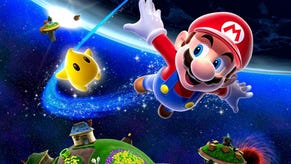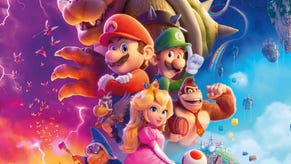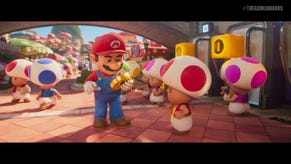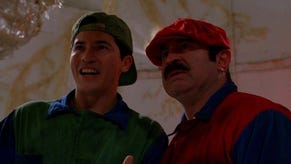Super Mario Bros. Movie review: not quite a super show, but a potent nostalgia tour
Though this new cinematic outing isn’t quite as tight as those given to Sonic and Pikachu, Illumination and Nintendo’s partnership is resoundingly successful in dispelling Mario’s 90s movie curse.
It’s taken decades, but video game movies have finally come full circle with the release of The Super Mario Bros. Movie. It was 1993’s Super Mario Bros. that kicked off Hollywood’s regular flirtations with video game adaptations - and the same film in many ways came to represent the infamy that video game movies have enjoyed since. Put simply, it was rubbish - though also filled with imagery that would make it a quiet cult classic. Now, Nintendo has partnered with Illumination, the studio behind the Minions, to break the curse.
By many measures, The Super Mario Bros. Movie is successful. By others, it is much less so - but be rest assured that anybody saying that this film is ‘as bad as’ or even remotely comparable to its nineties cousin is talking hyperbolic rubbish. This movie is in a different area code. The question is, is it actually as good as its present peers? The world of cinematic gaming conversions is very different in 2023 than in the nineties; in fact, the competition is quite fierce.
The choice of Illumination is, well, illuminating. This is a studio that I’d argue isn’t really about the art in the way some others are- certainly not in the Scorsese sense, but even within the kids’ space when compared to the likes of Pixar. In these stakes, I’d even place them south of Dreamworks Animation. But what Illumination is extremely adept at is making films that press the buttons of audiences, especially the young, in the right ways. They’re never particularly substantive, but they work. And such is the case for the Super Mario Bros. Movie.
It’s a workmanlike storyline, which keeps the runtime brief for the little kids and the gag-time plentiful for everybody else. It’s a familiar setup to the 1993 version, in fact - Mario and Luigi are New York plumbers, and after a good ten to fifteen minutes of their daily grind, events unfold that see them sucked down a warp pipe and spat out into the fantastical world we know from the games.
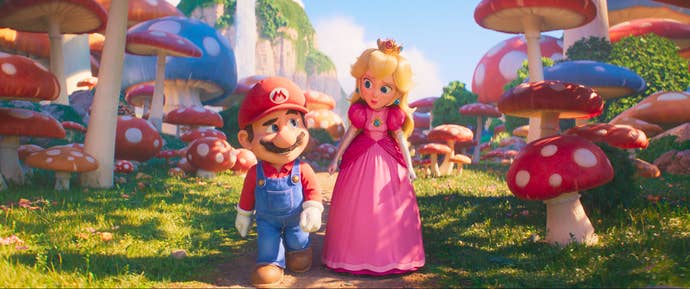
It’s worth noting that despite being a long-time fan of the Mushroom Kingdom and its adjacent worlds, and deeply familiar with all of the games, this early stint is actually my favorite part of the movie. There’s a fun little slapstick comedy of errors of a bathroom repair gone wrong, and a decent amount of characterization for Mario, Luigi, and surprisingly some of their extended family (but, before you get excited, no other familiar faces).
It’s in this stretch also that the references flow thick-and-fast (Kid Icarus! An Arwing! Wrecking Crew! Punch-Out!), and also when the performances and characters get a small chance to shine. Everybody here is well cast, I think - even Chris Pratt, who came in for a lot of criticism off the back of the trailers but does a pretty good ‘classic’ Mario voice at the very start of the film before dropping the exaggerated flair for something more palatable for the lead of a 92-minute feature. I thought Jack Black’s Bowser would be my peformance highlight - and he is great - but it’s the quiet brotherly chemistry between Pratt’s Mario and Charlie Day’s Luigi that left the biggest impression.
Once in the Mushroom Kingdom, the adventure begins - but really, not much happens. Bowser is on the rampage, and Princess Peach must seek out and form an alliance with the Kong Kingdom - represented by Donkey, Kranky, and about a million Kong cameos - in order to survive. Mario and Luigi end up split up; Mario with Peach, Luigi trapped with the bad guys. The plot from the moment all of this established through to the end is a breadcrumb trail - and boy, those crumbs are vanishingly small. This’ll likely work great for smaller kids, but the older viewers are the more likely they are to wish there were some more meat on these bones.
But this is an Illumination movie, and so minimalist as it is - it’s always fun. There’s a surprising adherence to the rules of the games that is uncommon in film adaptations - power-ups are a thing, and so too is the logic that if you get hit, you lose their bonus. Sometimes this risks backfiring - as a Mario player I understood the climax perfectly well, and was even hyped by it, but I reckon elements of it might fly over the heads of some.
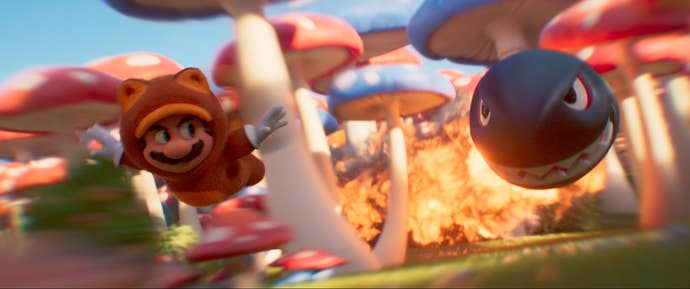
The nostalgia hose is open on full-pelt though - and it’s difficult to argue with its potency. Every frame is packed with references to the Mario and DK series, some more obscure than others. The glue that holds the film together is its score - and I’d actually argue it is the single best piece of the movie.
Kojo Kondo’s work on the Mario series is iconic, and this score by Brian Tyler (Expendables, Iron Man 3, Fast & Furious franchise) makes ample use of it. The score typically begins with a recognizable Mario theme, then quickly meanders off into something more original before staging a whiplash return to another classic theme. It’s frenetic, it’s wild… and wow, it works.
It’s true that any film would be transformed, probably for the worse, if its score were removed or replaced with something more generic - imagine James Bond or Indiana Jones without the themes of Johns Barry or Williams. But it has to be said that the Mario score is clearly transformative on another level. I dare say without this piece of the puzzle, the movie might appear more vapid, and as more of a cynical paint-by-numbers cash-in. The score lifts up the whole piece, and the movie as a whole feels like a perfect tribute to Kondo’s legend.
For me, the score sort of papers over the cracks. To compare with Mario’s time-honored nemesis, the Sonic movies (and also Detective Pikachu) excited me by the way they make use of some of the franchise’s iconic imagery - often in interesting and slightly surprising ways. There’s little surprising in Mario, and little interesting about how its biggest iconography appears. They just appear, and you’re asked to recognize them, and feel happy at the memory.
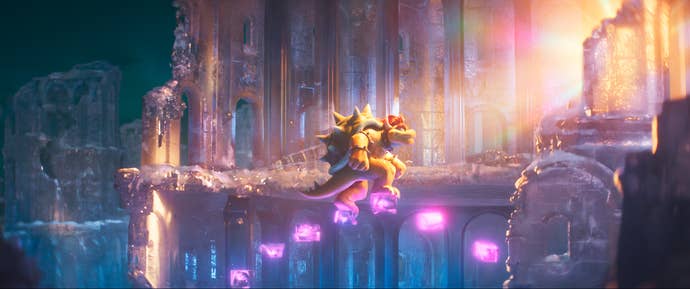
By the same token, Mario’s humor is surprisingly rote and one-dimensional - which surprised me, given Illumination’s comedy chops. In both instances one has to concede that this is a movie for children, obviously, but Sonic and Pokemon do show that there’s another, more measured and effective way.
But perhaps the point is that when the Mario Movie does try to escape this, it begins to stall. Take the arrival at the King Kingdom, for instance. Despite the brisk pace of the adventure, it’s clearly decided that at this point there’s been too long between action scenes - so we have a labored section where an unnamed Kong drives Crazy Taxi style through Kong-land while A-Ha’s ‘Take on Me’ blasts. It practically feels like it’s fallen out of a different movie. There’s a couple of moments like this, where the action begins to trend to the generic and your brain begins to drift.
The result, then, is a film that isn’t perhaps as interesting or as brave as some of its peers - but it’s perfectly enjoyable in its own right. For my money the crown remains somewhere between the Sonics and Detective Pikachu - with barely a cigarette paper to separate them - but Mario is just behind, nipping at the heels. And certainly, children will absolutely love it - this is going to do mega business.
Oh, and - if you’re patient enough to stay after the credits... you may want to do so? There's two stingers - one after the main credits, and a second after the full roll. If you know your Mario, it’s worth doing.
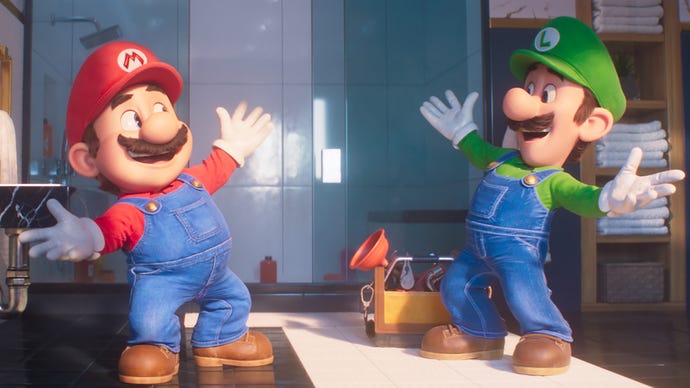


_jUe8CpT.jpg?width=291&height=164&fit=crop&quality=80&format=jpg&auto=webp)
